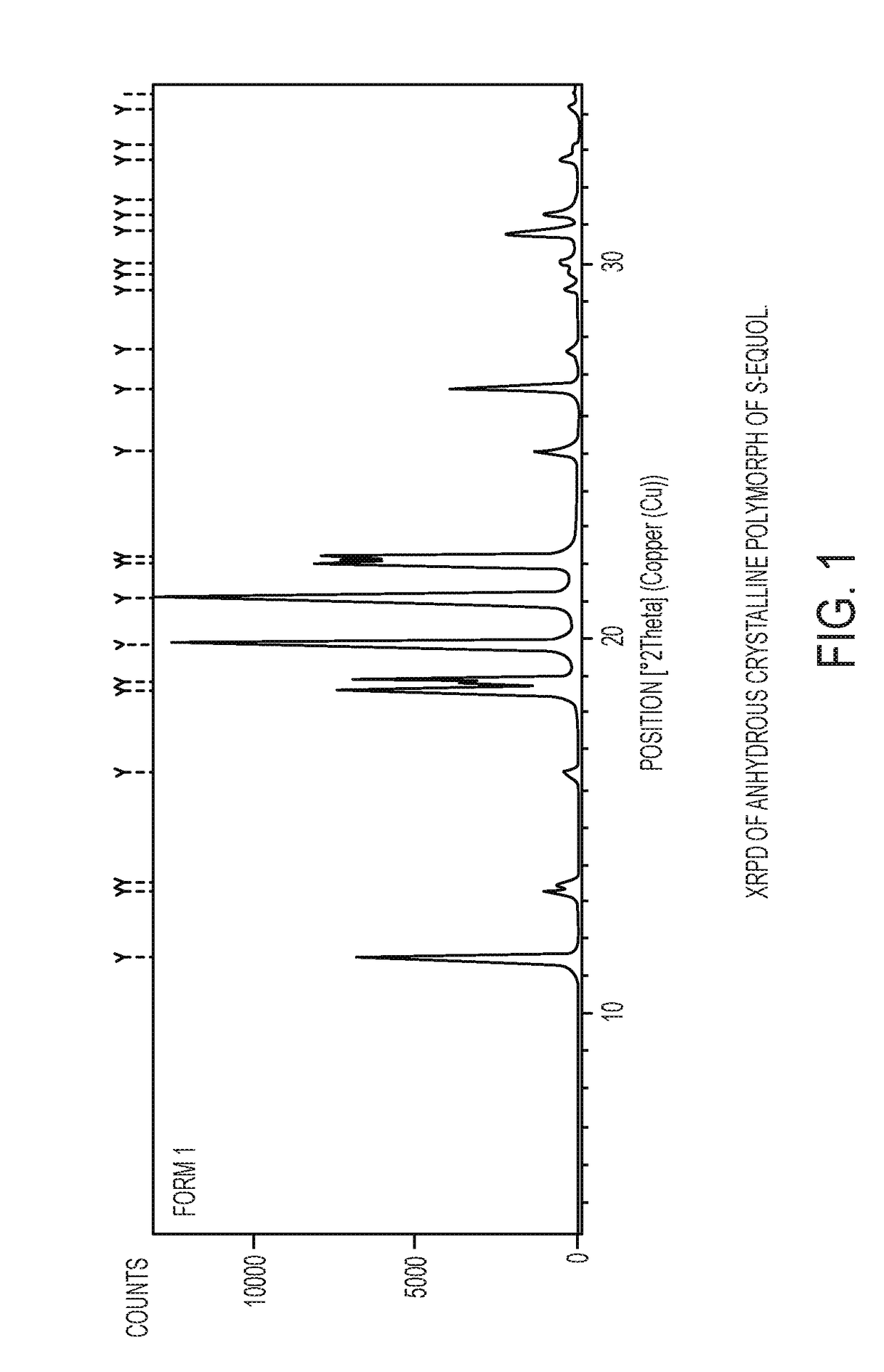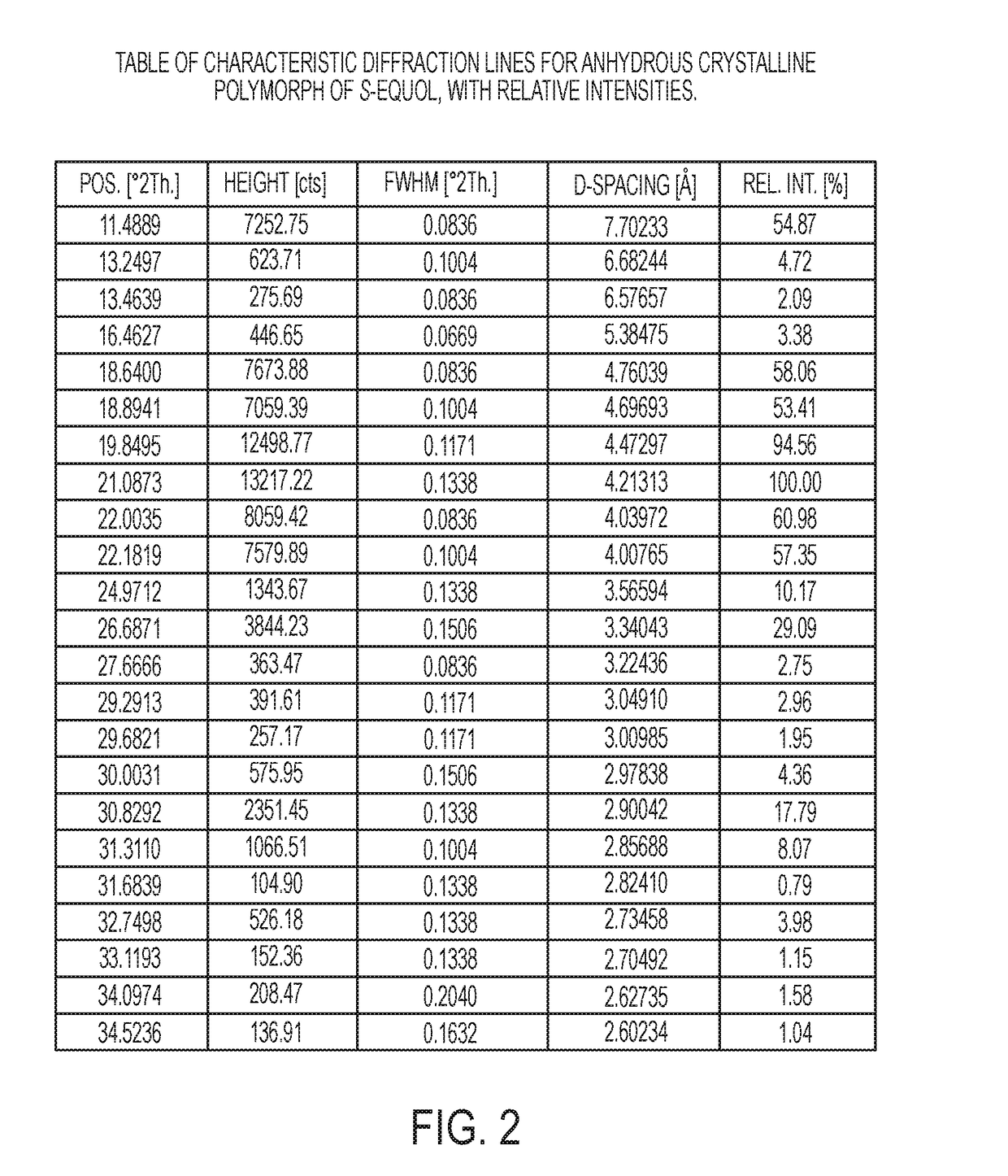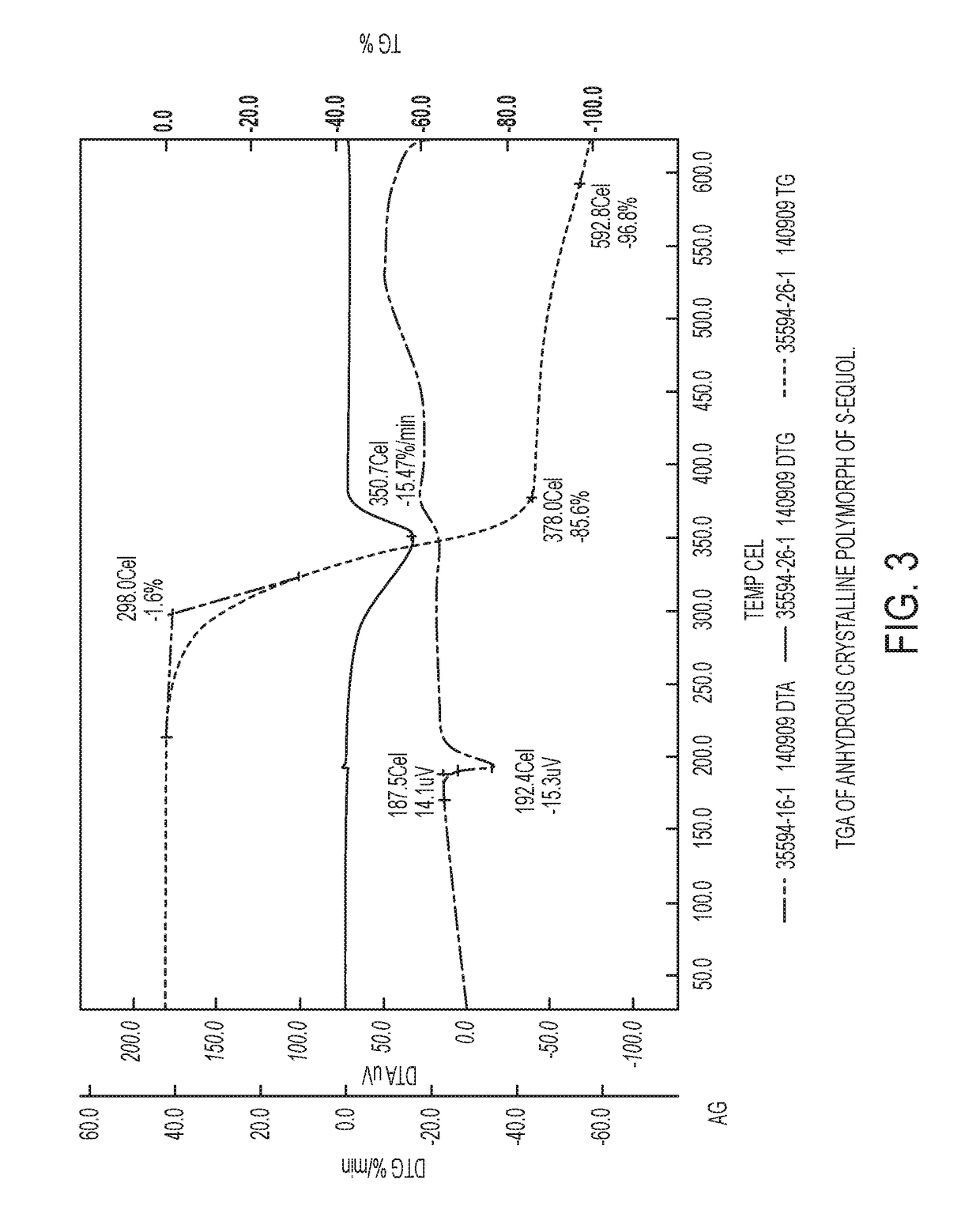Anhydrous crystalline form of S-equol
a technology of sequol and anhydrous crystalline form, which is applied in the field of anhydrous crystalline form of sequol, can solve the problems of two of the most difficult operations, crystallization and drying
- Summary
- Abstract
- Description
- Claims
- Application Information
AI Technical Summary
Benefits of technology
Problems solved by technology
Method used
Image
Examples
example 1
[0040]S-equol was prepared by treating bis-pivaloyl-S-equol with aqueous KOH in methanol at 0° C., and then allowing the solution to warm to room temperature. After about 1.5 hours, the reaction was cooled and ice was added to the solution, which was followed by the addition of acetic acid. The solution was then concentrated and the resulting suspension was washed with water to remove MeOH. After stirring for about 20 hours, the resulting solid was washed with water and hexanes and the damp solid was dried under vacuum to give an off-white solid. Next, the solid was suspended in heptane and ethyl acetate, and after about 20 hours, the solid was collected by filtration, washed with heptane / ethyl acetate, then heptane, and isolated under vacuum to provide S-equol.
example 2
[0041]Anhydrous crystalline S-equol was obtained using an evaporation crystallization method. A 50 mg of sample of S-equol was weighed in a glass tube. Depending on the solubility, 1, 2, or 3 ml of solvent was added. The solubility was tested step-wise, so that after the first addition of 1 ml of solvent, the suspension was stirred for at least 1 h. If the solid had not fully dissolved, a further 1 ml of solvent was added (50 g / l) and the stirring was continued again for an hour. This step was repeated to give a maximum of 3 ml (16.7 g / l) of solvent per experiment, giving then either clear solutions or suspensions for the evaporation step. The glass tubes were placed under nitrogen flow and solvents were left to evaporate. This took, depending of the solvent and applied temperature, from a few hours to several days. After evaporation of the solvents, the achieved solids were analyzed by XRPD.
example 3
[0042]Anhydrous crystalline S-equol was obtained using a cooling crystallization method. In each experiment a saturated or close-to-saturated solution was prepared at the starting temperature of the experiment. In crash cooling experiments, the clear solution was put into an ice bath and left to stand for two hours. The sample was filtered and analyzed with XRPD. In slow cooling experiments, the saturated solutions were cooled down to 0° C. with a cooling rate of 5 K / min, after which the sample stood for two hours at end temperature before filtration and XRPD analysis.
PUM
| Property | Measurement | Unit |
|---|---|---|
| wt % | aaaaa | aaaaa |
| temperature | aaaaa | aaaaa |
| temperature | aaaaa | aaaaa |
Abstract
Description
Claims
Application Information
 Login to View More
Login to View More - R&D
- Intellectual Property
- Life Sciences
- Materials
- Tech Scout
- Unparalleled Data Quality
- Higher Quality Content
- 60% Fewer Hallucinations
Browse by: Latest US Patents, China's latest patents, Technical Efficacy Thesaurus, Application Domain, Technology Topic, Popular Technical Reports.
© 2025 PatSnap. All rights reserved.Legal|Privacy policy|Modern Slavery Act Transparency Statement|Sitemap|About US| Contact US: help@patsnap.com



